The Birmingham City Powerhouse
| Capacity | 62 000 |
|---|---|
| Country | England |
| City | Birmingham |
| Clubs | Birmingham City FC |
| Category | Design awaiting implementation |
| Cost | £1.2 B ($1.57 B) |
| Construction | 2028–2030 |
| Design | Heatherwick Studio, Manica Architecture |
Advertisement
The Birmingham City Powerhouse – design description
How does The Birmingham City Powerhouse project look in brief?
The vision for Birmingham City’s new stadium stands out at first glance thanks to twelve tall towers styled as chimneys, planned to be positioned around the exterior perimeter of the building.
These “chimneys” are designed to reference the area’s historical brickworks and will give the arena a distinctive and recognizable identity, while also serving practical functions as roof supports, ventilation shafts and entrances to the stadium. One of the towers is expected to host the highest bar in the city.
The stadium is to be built near the current St Andrew’s and will feature a retractable roof, a movable pitch and large video screens. Its capacity is set at 62,000, making it one of the largest stadiums in the country.
In addition to Birmingham City matches, the venue is intended to host concerts as well as NFL games. The wider development will include a full training academy complex, along with shops, restaurants and residential apartments.
The stadium is expected to become a leading sports venue in Birmingham and the wider Midlands region, matching the aspirations of one of the United Kingdom’s major cities. The ambitious design, unveiled for the club’s 150th anniversary, reflects the intentions of the new American ownership, who aim to turn Birmingham City into a strong and recognisable Premier League brand.
Who are Birmingham City FC?
Birmingham City FC is one of England’s older football clubs, founded in 1875 and celebrating its 150th anniversary in 2025. The team has spent many seasons in the Premier League (most recently in 2010/11), with the club’s best league finish being sixth place in the 1955/56 campaign. Today, Birmingham City competes in the second tier, the EFL Championship.
The club’s major honours include two League Cup victories (1963, 2011), along with appearances in the finals of the FA Cup (1931, 1956) and the Inter-Cities Fairs Cup (1960, 1961). The team is nicknamed the Blues after its traditional colours, while the supporters are commonly known as Bluenoses.
Where does Birmingham City FC currently play?
Birmingham City’s home ground is St Andrew’s, opened in 1906 and continuously used by the club ever since. The stadium is located in the eastern part of the city, relatively close to the centre.
In the past, the venue could accommodate more than 60,000 spectators, but following stricter safety regulations, three of the four stands were rebuilt in the 1990s (the last major investment in the stadium), reducing the capacity to under 30,000.
What is Birmingham City FC’s potential?
Birmingham City is a professional football club with a long tradition and the ambition to compete in the Premier League, one of the strongest and most prestigious football competitions in the world. The stadium’s central location in Birmingham allowed it, prior to its capacity reduction, to attract crowds exceeding 60,000.
Birmingham is one of the largest cities in the United Kingdom. Its urban area is surpassed in population only by London, competing for second place with Greater Manchester. Despite this, clubs from Birmingham have not achieved the same level of strength or international recognition as those from London, Manchester and Liverpool.
The region is home to several strong professional clubs, including Wolverhampton Wanderers, West Bromwich Albion and Coventry City, while Aston Villa currently holds the strongest position. With the right vision, commitment and investment, Birmingham City has realistic potential to establish itself as one of the leading teams in the West Midlands.
Who is Birmingham City FC’s biggest rival?
The club’s biggest rival is another Birmingham-based team, Aston Villa, which has achieved greater success and currently competes in the Premier League. Matches between the two sides are known as the Second City derby.
Aston Villa’s stadium, Villa Park, is currently the larger and better-developed venue, with plans to expand it to 50,000 seats. It is also expected to host matches during UEFA Euro 2028.
What were the first plans for a new Birmingham City FC stadium?
The first concept for Birmingham City’s new stadium was developed in 2005 by the architectural studio Populous. Initially, the plan was for the venue to also accommodate cricket matches, but it was eventually intended to become a football-specific stadium used exclusively by Birmingham City.
The proposed stadium was designed to hold 55,000 spectators and feature a retractable roof. Even at that time, Birmingham Wheels Park – located not far from the current St Andrew’s – had been identified as the preferred site.
A key element of the proposal was the development of a “super casino”, but the city authorities ultimately supported a competing casino project near the airport. As a result, the stadium concept was abandoned.
It is also worth noting that a few years earlier, in 2001, Birmingham had been considered as a potential host city for the new national stadium, intended to replace the old Wembley. The city was London’s main competitor, but the decision was eventually made to build the new Wembley on the site of its predecessor.
How did the current new stadium project for Birmingham City FC come about?
When did plans for a new Birmingham City FC stadium emerge?
In July 2023, a majority stake in the club was acquired by the American company Shelby Companies Limited – a subsidiary of Knighthead Capital Management, whose co-founder, Tom Wagner, became the new chairman of Birmingham City. One of the co-investors was also former NFL star Tom Brady.
On 9 April 2024, it was announced that the new owners had taken control of the Birmingham Wheels Park site with the intention of building the new stadium there. From that moment, it became clear that the project would be one of their key priorities.
During an information session, Tom Wagner presented a preliminary stadium rendering and shared the first details, including a target capacity of 62,000. The wider development was to include an academy complex, recreational areas and commercial facilities. The total investment was estimated at up to £3 billion.
The scale of the American investors’ plans attracted considerable attention; however, less than a month after the announcement, the club was relegated to League One. Despite this setback, work on the project continued, and the team returned to the Championship after just one season.
How will the UK government support the construction of Birmingham City FC’s new stadium?
The owners were keen to improve accessibility, given the more than twofold increase in the stadium’s capacity. To this end, they lobbied government authorities for funding to develop public transport in the region.
In June 2025, Chancellor of the Exchequer Rachel Reeves confirmed financial support for the expansion of the tram line running from Wolverhampton to central Birmingham (West Midlands Metro). The club’s owners welcomed the decision in their statements, describing it as a key element for the entire stadium project.
The line will be extended eastwards, with one of the stops planned near the new stadium. Ultimately, it is intended to connect to the airport and the planned Birmingham Interchange station on the High Speed 2 rail line.
Government funding will also cover the costs of renovating Adderley Park railway station, located near the planned stadium.
Another proposal by the club’s owners to improve accessibility involves constructing a tunnel to the city centre, through which electric buses would operate.
When was the new Birmingham City FC stadium project unveiled?
The concept for the new stadium was presented on 20 November 2025, during a special event held at the Digbeth Loc film studio.
On the day of the presentation, the first renderings of the stadium were released, along with a promotional film featuring, among others, Real Madrid player and former Birmingham City star Jude Bellingham, as well as former NFL star Tom Brady.
The year 2025 also marked Birmingham City’s 150th anniversary, celebrated by the club two days after the stadium presentation, on the occasion of a league match against Norwich City.
Who is responsible for designing the new Birmingham City FC stadium?
The stadium is being designed by London-based Heatherwick Studio, in collaboration with globally renowned Manica Architecture, headquartered in Kansas City. Filmmaker Steven Knight – a screenwriter, director and producer set to write the script for the 26th James Bond film – also contributed to the concept development.
What does The Birmingham City Powerhouse project entail?
The new Blues stadium immediately draws attention with its twelve tall towers, designed to resemble chimneys and arranged around the exterior perimeter of the building. The towers are intended to reference the city’s industrial history, particularly the area where the stadium will be built, which was once home to brickworks with numerous chimneys.
The towers will also serve multiple functions – as supports for the roof, ventilation shafts and stadium entrances, with elevators operating inside. One of the “chimneys” will feature Birmingham’s highest bar, offering panoramic views of the city.
The stadium will be football-specific, with high, steep stands surrounding the pitch, without a clear division into tiers. It will be equipped with modern and advanced technological solutions, including a retractable roof, large video screens and a movable pitch, and will have a capacity of 62,000 spectators, making it one of the largest stadiums in England.
The concept may slightly resemble the unbuilt new stadium project for Chelsea FC, which was planned as a redevelopment of the decommissioned Battersea Power Station. While the design cannot be denied originality and strong local references, its bold form, scale and unconventional approach may provoke a wide range of reactions.
What role will the new Birmingham City FC stadium play?
Thanks to its avant-garde architecture and large capacity, the stadium is set to become the leading, flagship football venue for Birmingham and the wider Midlands. The tall “chimneys” will make it one of the most distinctive buildings in the city, establishing it as a new attraction for visitors.
The scale of the planned stadium reflects the ambitions of the club’s new owners, who aim to turn Birmingham City into a strong and recognisable Premier League brand, in line with the potential and aspirations of a team from one of the UK’s largest cities.
The stadium will not only serve Birmingham City matches, but also host a wide range of sporting and cultural events, including concerts and even NFL games.
What will the new Birmingham City FC stadium be called?
The project has been provisionally named The Birmingham City Powerhouse. The name is likely to change if a naming-rights sponsor is secured.
What will be included in the surroundings of the new Birmingham City FC stadium?
The stadium will be the centerpiece of a wider development called the Sports Quarter, which will also include an academy, a smaller stadium for the women’s team, recreational areas, as well as commercial developments, shops, restaurants and residential apartments.
The entire complex is planned to be lively and attract visitors 365 days a year, generating increased revenue for the club.
Where will the new Birmingham City FC stadium be built?
The stadium is planned to be located in East Birmingham, just north of the current St Andrew’s, on the site of Birmingham Wheels Park, about 2 miles (3 km) from the city centre. Adderley Park railway station is nearby, and a tram line (West Midlands Metro) will also be extended to the stadium.
Birmingham Wheels Park was a former motorsport complex, which included several racing tracks (for drifting, karting and stock car racing), an off-road course, and a speed skating track. The complex existed from 1963 until its closure at the end of 2021.
When will the new Birmingham City FC stadium be completed?
The planning application is expected to be submitted in 2026. Construction of the new stadium itself is scheduled to begin in 2028, with the club hoping the venue will be ready for the start of the 2030/31 season.
The cost of building the new stadium is estimated at £1.2 billion, while the completion of the entire Sports Quarter is expected to require £3 billion.
Advertisement
Renderings
-

2025 © Birmingham City FC 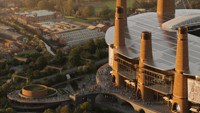
2025 © Birmingham City FC 
2025 © Birmingham City FC 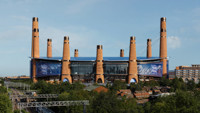
2025 © Birmingham City FC 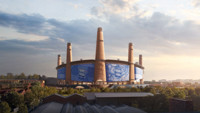
2025 © Birmingham City FC 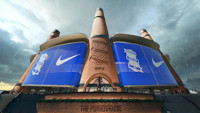
2025 © Birmingham City FC 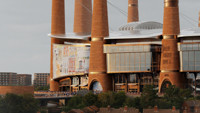
2025 © Birmingham City FC 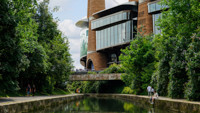
2025 © Birmingham City FC 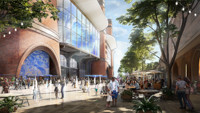
2025 © Birmingham City FC 
2025 © Birmingham City FC 
2025 © Birmingham City FC 
2025 © Birmingham City FC 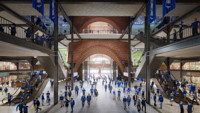
2025 © Birmingham City FC 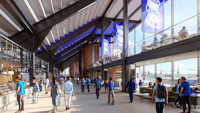
2025 © Birmingham City FC 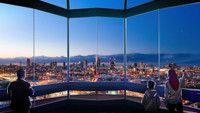
2025 © Birmingham City FC 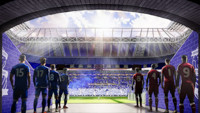
2025 © Birmingham City FC 
2025 © Birmingham City FC 
2025 © Birmingham City FC 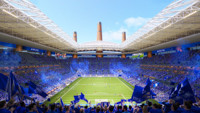
2025 © Birmingham City FC 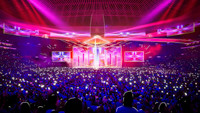
2025 © Birmingham City FC
Related news
2025
-
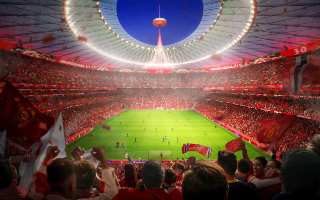
Great Britain: 2035 Women’s World Cup stadiums. New Trafford confirmed
Great Britain could host the 2035 FIFA Women’s World Cup, and today the list of stadiums that could welcome the world’s best players was revealed. England, Scotland, Wales and Northern Ireland have submitted a joint bid – the only one FIFA has received – which puts the project firmly in pole position.
-
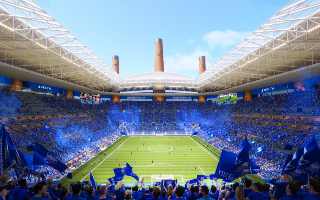
England: Birmingham City shocks with 62,000-seat powerhouse stadium
Birmingham City has unveiled a new stadium project designed to hold 62,000 spectators. The stadium is set to be the heart of the vast "Sports Quarter". English fans weren’t sure whether the visualizations were created by artificial intelligence or actually came from the club.
 StadiumDB
StadiumDB